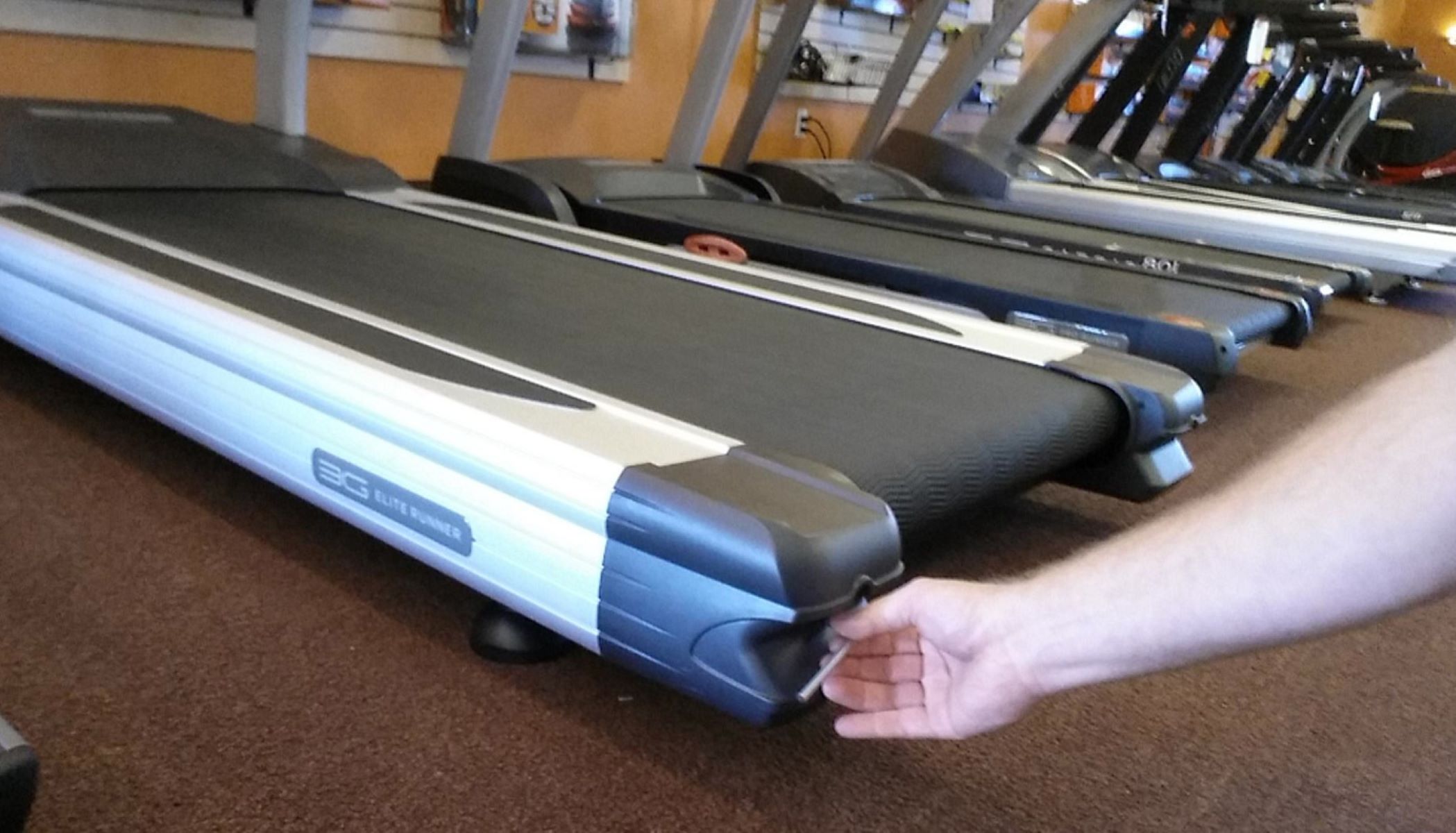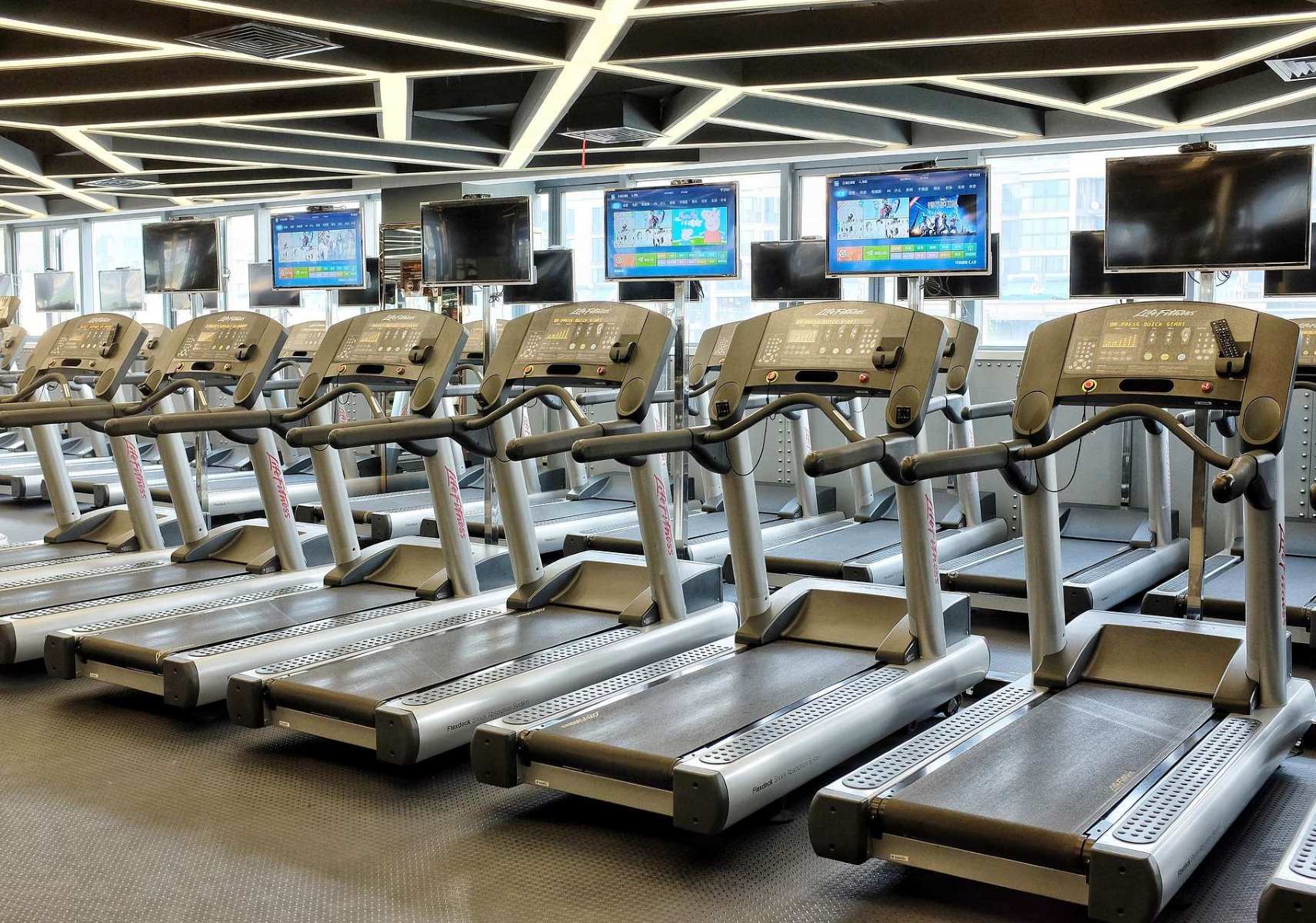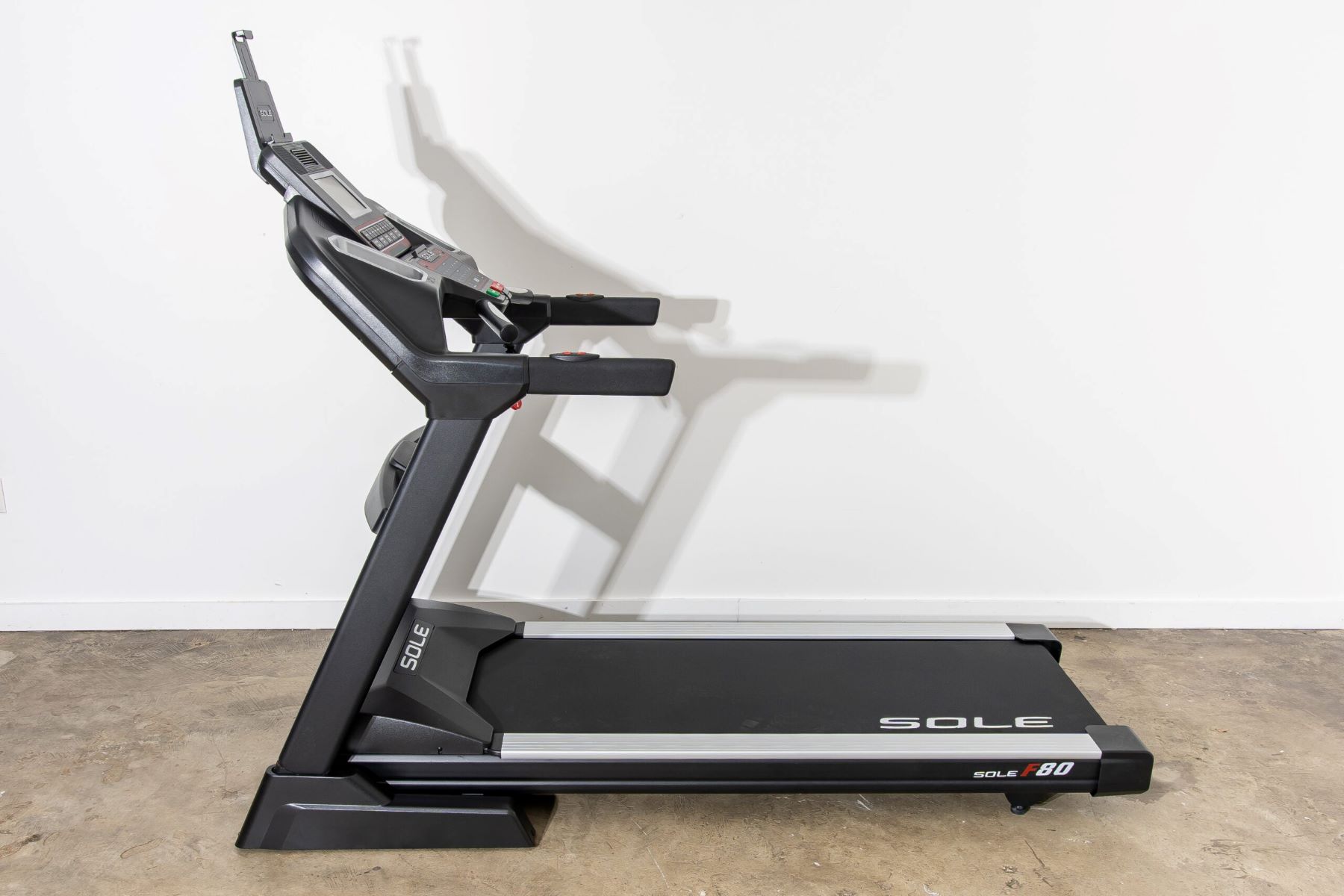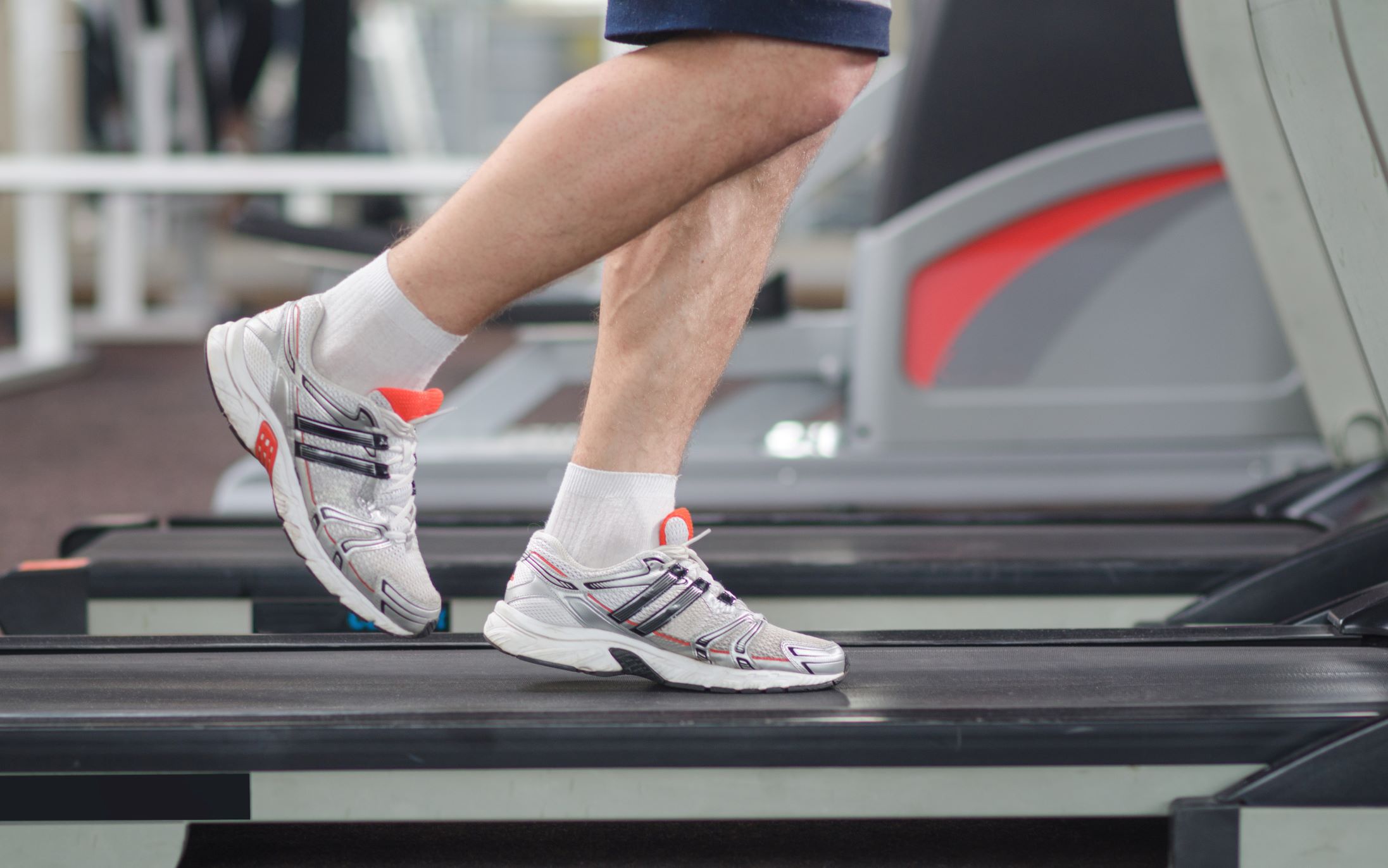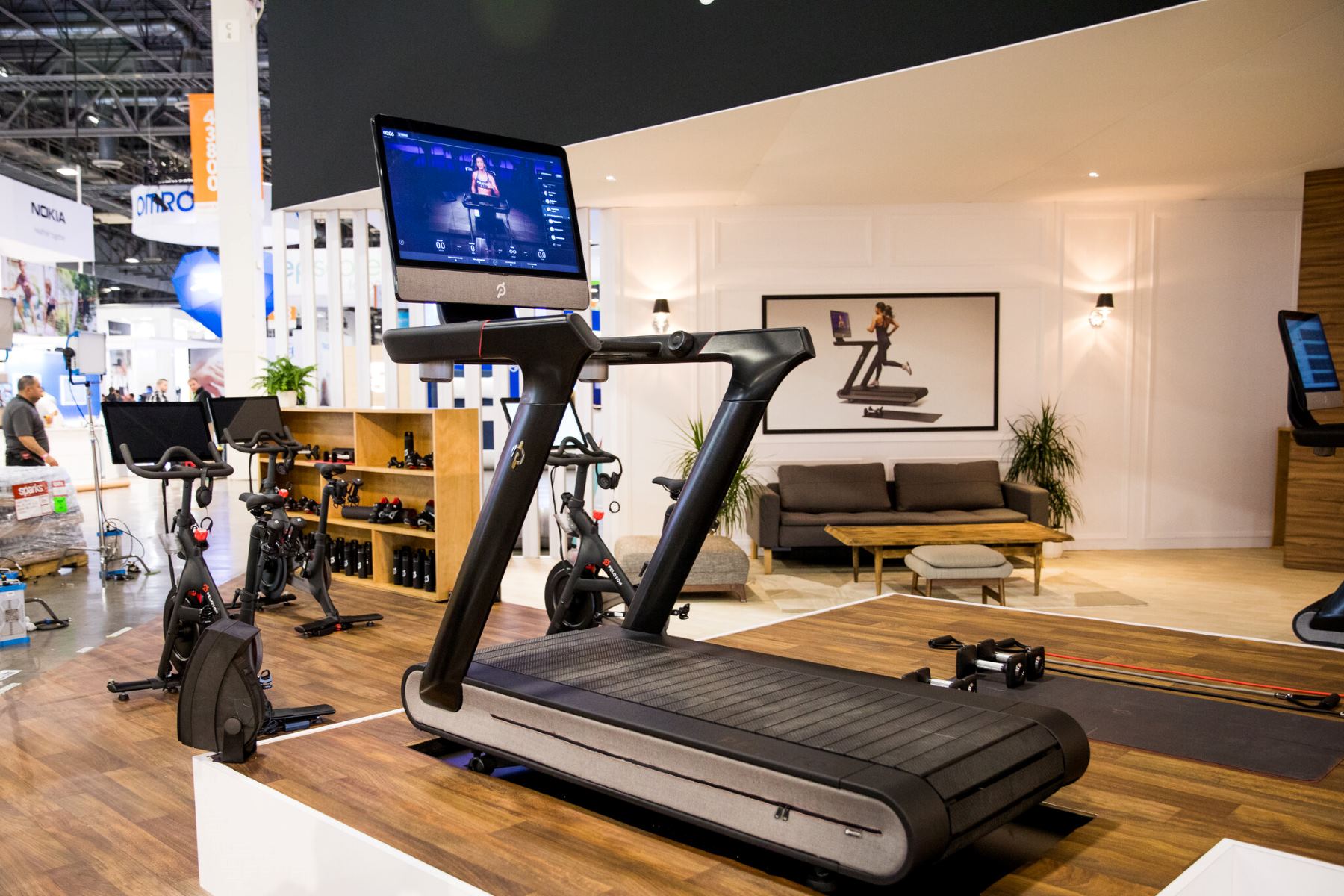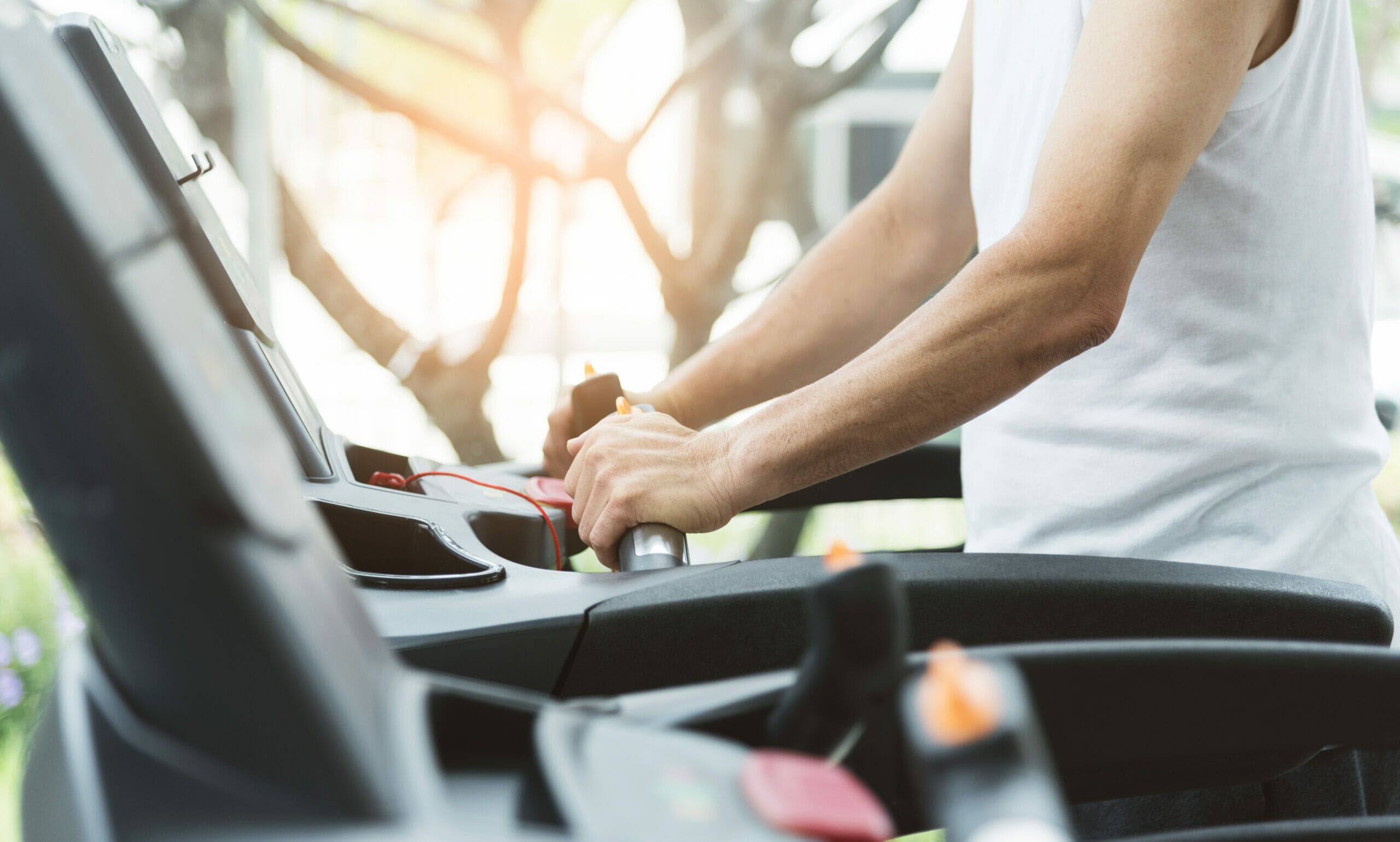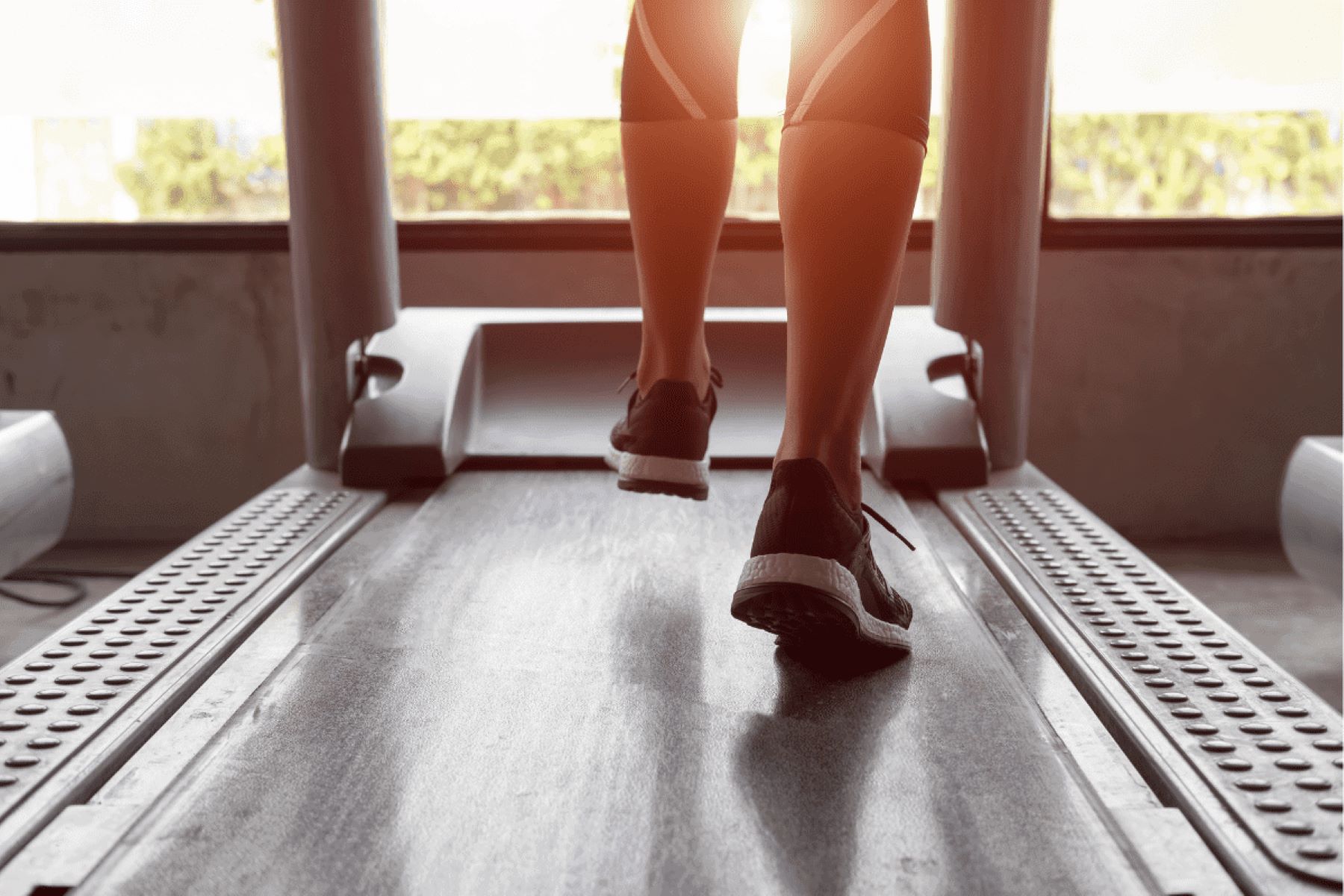

Featured
How Much Does A Treadmill Weigh
Modified: January 22, 2024
Discover the weight of featured treadmills in this comprehensive guide. Find out how much a treadmill weighs and get your fitness journey started today!
Introduction
When it comes to owning a treadmill, one of the factors to consider is its weight. The weight of a treadmill not only affects the ease of transportation and storage but also plays a significant role in determining its stability and durability. Whether you are planning to buy a treadmill for home use or looking for a commercial-grade machine, understanding the factors that contribute to its weight can help you make an informed decision.
Treadmill weight can vary significantly depending on various factors such as the frame material, motor size, running surface area, and additional features and attachments. The construction and design of a treadmill are crucial in determining its sturdiness and performance.
In this article, we will explore the factors that affect a treadmill’s weight and provide insights into different types of treadmills available in the market. Whether you are looking for a portable and lightweight treadmill for easy mobility or a heavy-duty commercial treadmill for intense workouts, we’ve got you covered.
So, let’s dive in and discover how much a treadmill weighs and what factors you need to consider when choosing the right one for your needs.
Factors Affecting Treadmill Weight
Several factors contribute to the overall weight of a treadmill. Understanding these factors can help you determine the right treadmill for your specific needs. Let’s take a closer look at some of the main factors that affect the weight of a treadmill:
- Frame Material and Design: The material used for the frame construction has a significant impact on the weight of the treadmill. Common materials include steel, aluminum, and composite materials. Steel frames tend to be heavier but offer greater durability and stability, while aluminum frames are lighter but may sacrifice some sturdiness. The design of the frame, including its shape and reinforcements, also influences the overall weight.
- Motor Size and Weight: The motor is another key component that affects the weight of a treadmill. Larger motors, with higher horsepower, tend to be heavier. This is because they require more robust construction to handle the increased power output. While a heavier motor may indicate a more powerful and durable treadmill, it can also result in a heavier overall weight.
- Running Surface Area: The size of the running surface directly impacts the weight of the treadmill. Treadmills with larger running decks will generally be heavier to accommodate the increased surface area. This is especially important if you have a longer stride or prefer a wider running space for more comfortable workouts.
- Additional Features and Attachments: Treadmills often come with various features and attachments, such as incline/decline options, heart rate monitors, speakers, and cooling fans. These extras can add weight to the treadmill. Consider which features are essential to you and understand that they may contribute to a heavier overall machine.
It’s important to note that while weight can provide some indication of a treadmill’s durability and stability, it should not be the sole determining factor when selecting a treadmill. Other factors such as warranty, brand reputation, user reviews, and intended use should also be considered.
Frame Material and Design
The frame material and design of a treadmill play a significant role in its weight, durability, and stability. Different materials and designs offer varying levels of sturdiness and performance. Let’s explore the impact of frame material and design on treadmill weight.
Steel: Steel frames are commonly used in treadmills due to their strength and durability. Steel frames tend to be heavier than other materials, but they offer excellent stability, especially during intense workouts or high-speed running. They are less likely to flex or wobble, ensuring a safe and secure exercise experience. If you prioritize stability and longevity, a treadmill with a steel frame might be the best option for you.
Aluminum: Aluminum frames are generally lighter than steel frames, making them more suitable for portable or lightweight treadmills. While aluminum frames may not offer the same level of sturdiness as steel frames, they can still provide adequate stability for most users. Additionally, aluminum frames tend to have a sleek and modern appearance, adding aesthetic value to the treadmill.
Composite Materials: Some treadmills feature frames made of composite materials, such as carbon fiber or high-density plastics. These materials offer a good balance between weight and strength. Composite frames are typically lighter than steel frames but still provide decent stability and durability. They are an excellent choice for those who want a sturdy treadmill without the added weight of a steel frame.
In addition to the material, the design of the frame also influences the weight of the treadmill. Treadmill frames are usually constructed using a combination of vertical and horizontal bars to provide stability. The design may include various reinforcements, such as crossbars or supporting brackets, to enhance the structural integrity of the frame.
When considering frame design, look for features that contribute to overall stability, such as a wide base, heavy-duty construction, and strategically placed reinforcements. These design elements can help distribute the weight evenly and minimize any wobbling or shaking during use.
Ultimately, the choice of frame material and design depends on your specific needs and preferences. If weight is a crucial factor for you, opt for a treadmill with an aluminum or composite frame. If you prioritize stability and durability, a treadmill with a steel frame might be the better option. Consider your fitness goals, intended usage, and available space before making a decision.
Motor Size and Weight
The motor of a treadmill is responsible for powering the belt that you walk or run on. The size and weight of the motor can have a significant impact on the overall weight and performance of the treadmill. Let’s explore how motor size and weight affect treadmills.
Horsepower (HP): The horsepower rating of a treadmill’s motor is an essential factor to consider. Higher horsepower usually indicates a more powerful motor, capable of delivering smoother and consistent performance, especially at faster speeds or inclines. However, a more powerful motor also tends to be heavier. It’s important to find the right balance between motor power and weight for your specific needs.
Continuous Duty vs. Peak Duty: Treadmill motors are typically labeled with either “continuous duty” or “peak duty” horsepower ratings. Continuous duty horsepower (CHP) refers to the sustained power output the motor can maintain during extended periods of use. Peak duty horsepower (PHP) represents the maximum power output the motor can reach for short bursts. CHP is a more reliable indicator of a motor’s true power and performance.
Torque: Torque is the rotational force produced by the motor. A higher torque rating indicates a motor’s ability to handle heavier loads and maintain consistent speed, particularly when running at high inclines or with heavier users. While torque does not directly influence the weight of the motor, it is worth considering when evaluating a treadmill’s performance and suitability for your workouts.
When it comes to motor weight, larger and more powerful motors tend to be heavier. This is because they require more robust construction and additional components, such as larger magnets and windings, to handle the increased power output. It’s important to strike a balance between motor power and weight, ensuring that the treadmill remains stable and durable without being excessively heavy.
Keep in mind that the motor is a crucial component of a treadmill, directly impacting its performance and longevity. Investing in a treadmill with a high-quality motor, even if it adds to the overall weight, can result in a smoother and more enjoyable exercise experience.
Consider your fitness goals, intended usage, and the types of workouts you plan to perform on the treadmill when determining the appropriate motor size and weight. If you prefer high-intensity workouts, such as running at high speeds or steep inclines, a more powerful motor may be necessary. However, if you primarily walk or engage in low-impact exercises, a lighter motor might suffice.
Ultimately, finding the right balance between motor power and weight is crucial to ensure optimal treadmill performance and satisfaction with your workouts.
Running Surface Area
The running surface area of a treadmill is another important factor to consider when looking at its weight. The size of the running surface directly impacts the overall dimensions and weight of the treadmill. Let’s delve into how the running surface area affects treadmills.
Length and Width: The length and width of the running surface play a significant role in determining the overall weight of the treadmill. Generally, treadmills with larger running decks will be heavier due to the additional materials needed to support the extended surface area. A longer and wider running surface provides more space for comfortable walking, jogging, or running, accommodating users with longer strides.
It’s essential to consider your height and stride length when choosing the right treadmill with an appropriate running surface area. If you have a taller stature or prefer a more extended walking or running stride, opt for a treadmill with a longer deck. This will provide you with a more comfortable and natural range of motion during your workouts.
Cushioning and Impact Absorption: Along with the running surface area, the cushioning and impact absorption system employed in a treadmill can also affect its weight. Cushioning systems are designed to reduce the impact on joints and muscles, providing a more comfortable and injury-free workout experience. However, these systems can add weight to the overall treadmill construction. Consider the type and effectiveness of the cushioning system when evaluating a treadmill’s weight and suitability for your specific needs.
A larger running surface area allows for more freedom of movement during workouts, giving you the confidence to focus on your stride and form. Additionally, it can contribute to a more stable and secure workout experience, especially at higher speeds or during intense running sessions.
When considering the running surface area, also take into account the available space in your home or gym. Measure the area where you plan to place the treadmill to ensure it can comfortably accommodate the size of the running deck. Keep in mind that you may need additional space at the front and rear of the treadmill for safe entry and exit.
Overall, the size of the running surface is a crucial factor in determining the weight and usability of a treadmill. Consider your body proportions, exercise preferences, and available space to find the right balance between a comfortable workout area and a manageable treadmill weight.
Additional Features and Attachments
When shopping for a treadmill, you’ll often come across models that offer a range of additional features and attachments. While these extras can enhance your workout experience, it’s important to consider how they contribute to the overall weight of the treadmill. Let’s explore the impact of additional features and attachments on treadmill weight.
Incline and Decline Options: Many treadmills come with adjustable incline and decline settings, allowing you to simulate uphill and downhill running. This feature adds versatility to your workouts and engages different muscle groups. Treadmills with incline and decline options may have additional motors or mechanisms that control the tilt of the running surface, which can increase their overall weight.
Heart Rate Monitors: Some treadmills are equipped with built-in heart rate monitors. These monitors can help you track your heart rate during workouts and maintain your desired intensity. The incorporation of heart rate monitoring technology may add weight to the treadmill, as it requires additional sensors and circuitry.
Entertainment and Connectivity: Many treadmills now come with built-in speakers, MP3 compatibility, and Bluetooth connectivity. These features allow you to listen to music or audio books while exercising, providing entertainment and motivation. While the added electronics and speakers may slightly increase the weight of the treadmill, they can contribute to a more enjoyable workout experience.
Cooling Fans and Ventilation: Some treadmills feature cooling fans or ventilation systems to keep you comfortable during your workouts. These fans help circulate air, reducing heat build-up and preventing excessive sweating. While the fans themselves may not significantly contribute to the weight of the treadmill, the additional wiring and components can add a small amount of weight.
Attachment Accessories: Treadmills often have the option to attach accessories such as tablet holders, water bottle holders, or magazine racks. These attachments are convenient and can enhance your exercise routine. While the weight of these accessories is typically minimal, it’s important to consider their impact on the overall weight and stability of the treadmill.
When choosing a treadmill with additional features and attachments, carefully evaluate how these extras align with your needs and preferences. Consider whether they are essential for your workouts or if they may add unnecessary weight to the treadmill. Strike a balance between the desired features and the overall weight of the machine to ensure a satisfactory exercise experience.
Remember, while additional features can enhance your workout routine, the primary focus should be on the treadmill’s performance, durability, and overall suitability for your fitness goals.
Foldable vs. Non-foldable Treadmills
One of the factors to consider when purchasing a treadmill is whether you prefer a foldable or non-foldable design. Each option has its own advantages and considerations, including weight. Let’s explore the differences between foldable and non-foldable treadmills and how they impact treadmill weight.
Foldable Treadmills: Foldable treadmills are designed with a folding mechanism that allows you to easily fold and store the machine vertically, saving space when it’s not in use. The folding feature can be especially beneficial for those with limited space or who prefer the option to tuck away their treadmill when not in use. Foldable treadmills often tend to be lighter in weight compared to their non-foldable counterparts. The folding mechanism allows for a more streamlined design, reducing the overall weight of the machine. However, it’s important to note that the weight of a foldable treadmill can vary based on its size, motor power, and construction materials.
Non-foldable Treadmills: Non-foldable treadmills, also known as commercial or gym-grade treadmills, are typically larger, sturdier, and heavier compared to foldable models. These treadmills are built to withstand rigorous use in gym or commercial settings and offer advanced features and durability. Due to their robust construction, non-foldable treadmills often provide enhanced stability during intense workouts. The weight of a non-foldable treadmill is generally higher due to the heavier frame, larger motor, and additional components required for commercial-grade performance.
When deciding between a foldable and non-foldable treadmill, consider your specific needs and preferences. If space is a concern or if you prefer the convenience of easy storage, a foldable treadmill may be the better option. It can be a lighter and more compact choice that fits well in home settings. However, if you prioritize durability, stability, and a gym-like experience, a non-foldable treadmill may be worth the extra weight and investment.
Additionally, it’s important to ensure that the folding mechanism is sturdy and reliable. Look for treadmills with high-quality folding mechanisms that securely lock in place when in use.
Ultimately, the decision between a foldable and non-foldable treadmill depends on factors such as available space, desired features, and intended usage. Consider your fitness goals, available space, and whether convenience or performance is more important in your exercise routine to guide your choice.
Compact vs. Commercial Treadmills
When it comes to treadmills, another important consideration is whether you need a compact treadmill designed for home use or a commercial-grade treadmill commonly found in gyms. Understanding the differences between compact and commercial treadmills can help you make an informed decision regarding their weight and suitability for your fitness needs.
Compact Treadmills: Compact treadmills are designed with space-saving in mind. They are generally smaller in size, lighter in weight, and more portable compared to commercial treadmills. Compact treadmills are an excellent choice for home gyms or limited spaces where storage and mobility are essential. Their lighter weight makes them easier to move and transport, allowing you to set up your workout area according to your preference. However, it’s important to note that the weight of a compact treadmill can vary depending on factors such as motor size, frame materials, and additional features.
Commercial Treadmills: Commercial treadmills are built to withstand heavy usage and provide advanced features and durability. They are larger, heavier, and sturdier compared to compact treadmills. Commercial treadmills are designed with high-quality materials, robust motors, and sophisticated cushioning systems to withstand the demands of intense workouts. While the weight of commercial treadmills can be significant, their heavier construction provides superior stability and durability for users of all fitness levels. These treadmills are commonly found in fitness centers or commercial gym settings where they can accommodate multiple users and prolonged use.
When deciding between a compact and commercial treadmill, consider your specific fitness goals, available space, and budget. If you have limited space at home and prioritize easy storage and mobility, a compact treadmill may be the ideal choice. However, if you require a treadmill with advanced features, greater stability, and the ability to handle rigorous workouts, a commercial-grade treadmill may better suit your needs, despite its heavier weight.
It’s also important to factor in the space available in your home gym and whether the treadmill can be easily maneuvered through doorways and up or down stairs, if necessary. Some compact treadmills offer folding options to further optimize space and facilitate storage.
Ultimately, the decision between a compact and commercial treadmill depends on your specific requirements, available space, and budget. Consider your fitness goals, the intended usage of the treadmill, and any limitations or preferences in terms of size and weight to make the best choice for your fitness journey.
Portable and Lightweight Treadmills
If you value portability and ease of transportation, a portable and lightweight treadmill may be the perfect choice for you. These treadmills are designed with compactness and mobility in mind, making them ideal for those who have limited space or frequently move their exercise equipment. Let’s explore the benefits and considerations of portable and lightweight treadmills.
Portability: Portable treadmills are designed to be easily moved and transported. They are often equipped with wheels or a folding mechanism that enables you to fold and roll the treadmill to different locations. This feature is particularly useful if you want to exercise in different rooms, take your treadmill outdoors, or store it away after workouts.
Weight: Lightweight treadmills are typically lighter than traditional treadmills, making them easier to handle and transport. The weight of portable treadmills can vary depending on factors such as the motor size, frame material, and features. Generally, lightweight treadmills are easier to move and require less effort to lift and carry.
Space-saving: Portable treadmills are designed to take up minimal space, making them suitable for small apartments, condos, or rooms with limited square footage. They often have a more compact footprint, allowing you to set up your exercise area without sacrificing too much space in your home.
Performance: While portable and lightweight treadmills offer convenience and ease of transport, they may have certain limitations in terms of motor power and features compared to heavier, non-portable models. These treadmills are generally designed for walking, jogging, and light running rather than intense workouts or high-speed intervals. If you prioritize advanced features and high-performance capabilities, a traditional, heavier treadmill may be a better fit for your exercise needs.
When considering a portable and lightweight treadmill, it’s important to assess your specific fitness goals and expectations. If you primarily engage in low-impact exercise, have limited space, or require the flexibility to move your treadmill easily, a portable and lightweight option might be the best choice for you.
It’s also worth noting that while portable treadmills are generally lighter, their weight can still vary depending on specific models and the materials used in their construction. Be sure to check the weight capacity of the treadmill to ensure it can support your body weight comfortably.
Ultimately, the decision to choose a portable and lightweight treadmill depends on your unique circumstances and priorities. Evaluate your available space, desired level of portability, and exercise requirements to select a treadmill that aligns with your needs.
Heavy-duty and Commercial Treadmills
If you’re looking for a treadmill that can withstand intense workouts, accommodate multiple users, and provide advanced features, a heavy-duty or commercial treadmill may be the ideal choice. These treadmills are designed for high-performance use in gyms, fitness centers, or for individuals who require a durable and robust machine. Let’s delve into the benefits and considerations of heavy-duty and commercial treadmills.
Durability and Stability: Heavy-duty and commercial treadmills are constructed with high-quality materials, ensuring exceptional durability and stability. They are built to withstand rigorous workouts and continuous use without compromising performance or structural integrity. These treadmills are often equipped with reinforced frames, heavy-duty motors, and thick running belts, providing a stable and reliable platform for various exercise routines.
Advanced Features: Commercial treadmills are known for their advanced features and cutting-edge technology. They often offer a wide range of workout programs, incline/decline options, heart rate monitoring, interactive touchscreens, and Bluetooth connectivity. These features enhance the workout experience, allowing users to customize their routines, track their progress, and stay motivated. The inclusion of these additional features may increase the overall weight of the treadmill but brings added functionality and versatility to your workouts.
Spacious Running Area: Heavy-duty and commercial treadmills typically come with larger running surfaces, offering ample space for walking, jogging, or running. The spacious deck provides more freedom of movement, allowing users of various heights and stride lengths to exercise comfortably. It’s important to note that the larger running area contributes to the overall weight of the treadmill, as it requires additional materials to support the extended surface.
User Capacity: Commercial treadmills are built to accommodate multiple users and a wider range of body weights. They often have higher weight capacities compared to residential treadmills, ensuring that users of various sizes and fitness levels can safely and comfortably use the machine. The increased capacity is achieved through reinforced frames and components, which can contribute to the overall weight of the treadmill.
When considering a heavy-duty or commercial treadmill, it’s crucial to assess your specific fitness goals, available space, and budget. While these treadmills offer exceptional performance and durability, they might not be necessary for individuals who primarily engage in low-impact exercises or have limited space. Additionally, commercial treadmills tend to be larger and heavier, requiring ample room and possibly professional assembly.
Ultimately, heavy-duty and commercial treadmills are best suited for those who demand the highest level of performance, robust construction, and advanced features in their fitness equipment. If you’re a dedicated athlete, fitness enthusiast, or gym owner, investing in a heavy-duty or commercial treadmill can provide you with the durability and capabilities necessary to achieve your fitness goals.
Conclusion
Choosing the right treadmill involves considering various factors, including its weight. The weight of a treadmill is influenced by several key factors, such as frame material and design, motor size, running surface area, and additional features. Understanding these factors can help you make an informed decision based on your needs and preferences.
The frame material and design impact the weight, durability, and stability of a treadmill. Steel frames offer excellent stability and durability, while aluminum frames are lighter and more portable. Composite materials strike a balance between weight and strength. Consider your priorities and find the right balance between frame material and weight for your specific requirements.
The size and weight of the motor affect the performance and weight of a treadmill. Higher horsepower motors tend to be heavier but offer smoother and consistent performance. Consider your exercise intensity and desired features when selecting the appropriate motor size and weight.
The running surface area determines the weight of the treadmill, with larger decks requiring more materials for support. A larger running surface provides more comfortable workouts and stability. Evaluate your body proportions and available space to determine the right size and weight for your needs.
Additional features and attachments can contribute to the weight of a treadmill. Incline options, heart rate monitors, entertainment features, and other attachments enhance the workout experience but add weight. Prioritize features that align with your fitness goals while considering their impact on the overall weight of the treadmill.
Consider whether a foldable or non-foldable treadmill suits your needs. Foldable treadmills are suitable for compact spaces and easy storage, while non-foldable treadmills provide stability and durability. The choice depends on available space and whether portability is a priority for you.
Compact treadmills are lightweight and portable, ideal for small spaces and easy transportation, while heavy-duty and commercial treadmills offer advanced features, durability, and stability. Choose based on your preferences and intended usage.
In conclusion, understanding the factors affecting treadmill weight is crucial in choosing the right treadmill for your fitness journey. Consider your space limitations, desired features, exercise goals, and budget to find a treadmill that strikes the right balance between weight, stability, durability, and performance for an enjoyable and effective workout experience.

